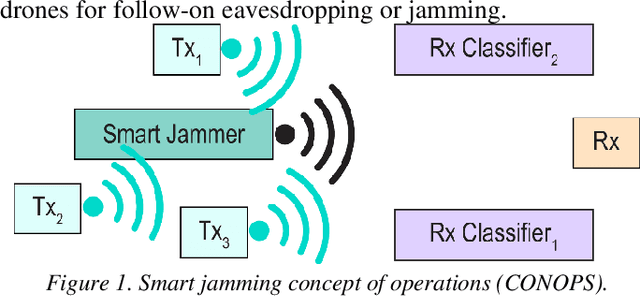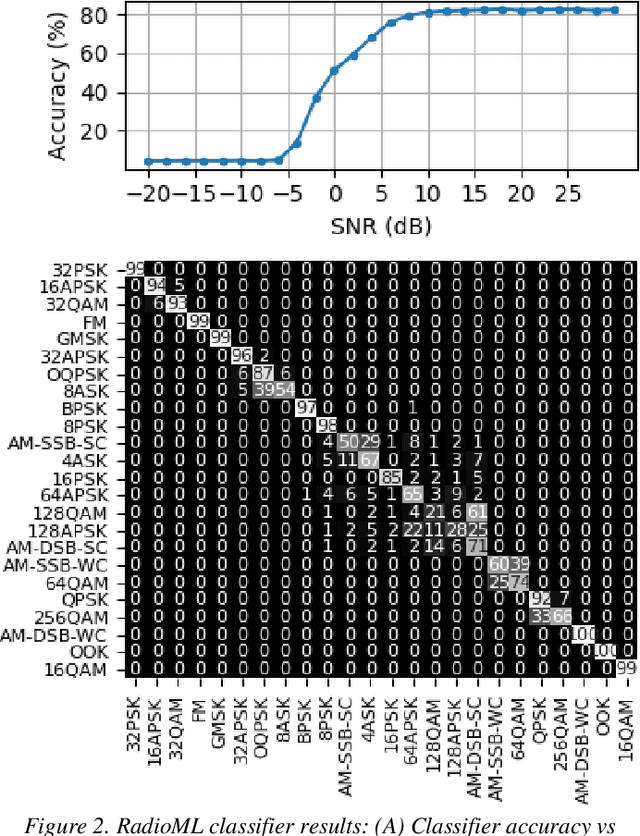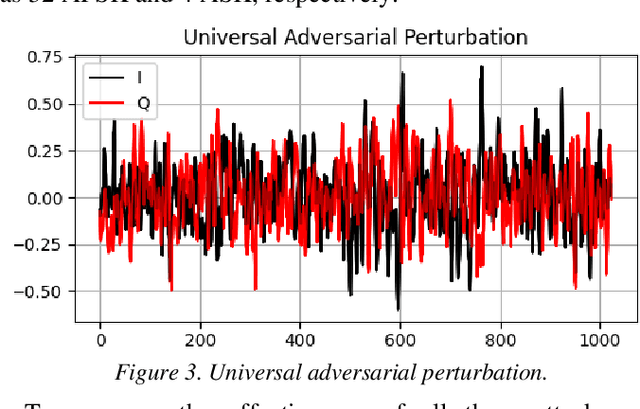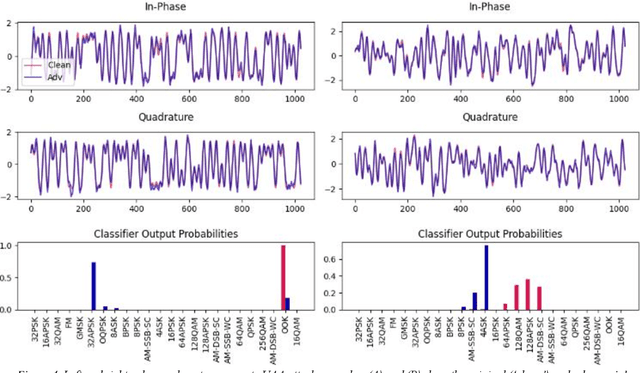Peter K. Relich
Real-time Over-the-air Adversarial Perturbations for Digital Communications using Deep Neural Networks
Feb 20, 2022



Abstract:Deep neural networks (DNNs) are increasingly being used in a variety of traditional radiofrequency (RF) problems. Previous work has shown that while DNN classifiers are typically more accurate than traditional signal processing algorithms, they are vulnerable to intentionally crafted adversarial perturbations which can deceive the DNN classifiers and significantly reduce their accuracy. Such intentional adversarial perturbations can be used by RF communications systems to avoid reactive-jammers and interception systems which rely on DNN classifiers to identify their target modulation scheme. While previous research on RF adversarial perturbations has established the theoretical feasibility of such attacks using simulation studies, critical questions concerning real-world implementation and viability remain unanswered. This work attempts to bridge this gap by defining class-specific and sample-independent adversarial perturbations which are shown to be effective yet computationally feasible in real-time and time-invariant. We demonstrate the effectiveness of these attacks over-the-air across a physical channel using software-defined radios (SDRs). Finally, we demonstrate that these adversarial perturbations can be emitted from a source other than the communications device, making these attacks practical for devices that cannot manipulate their transmitted signals at the physical layer.
 Add to Chrome
Add to Chrome Add to Firefox
Add to Firefox Add to Edge
Add to Edge